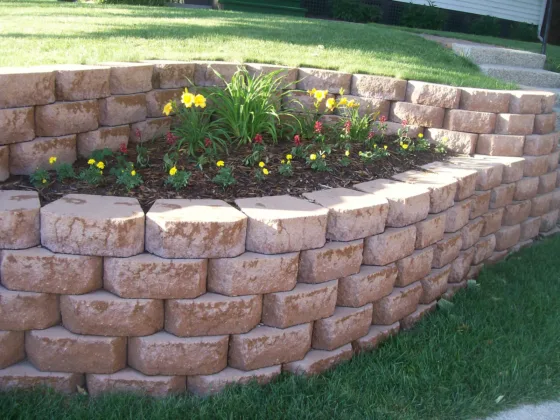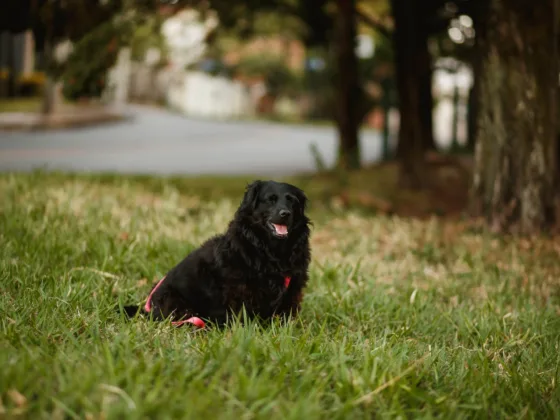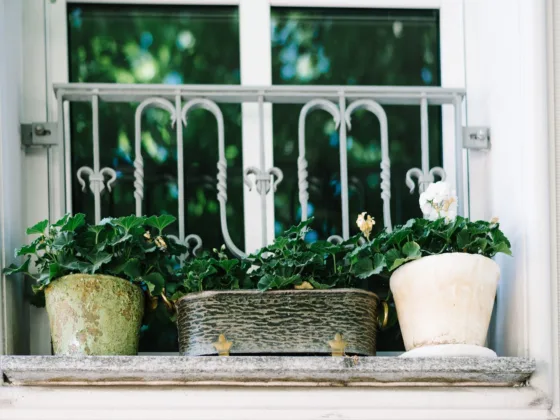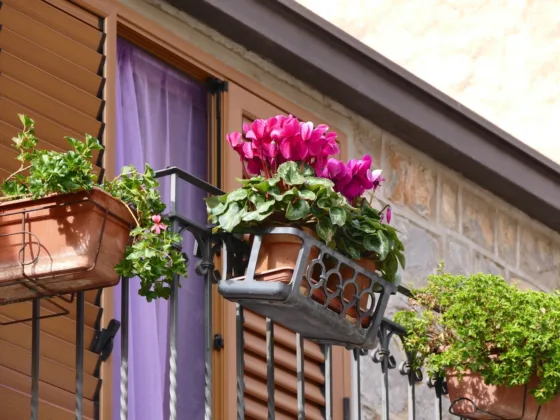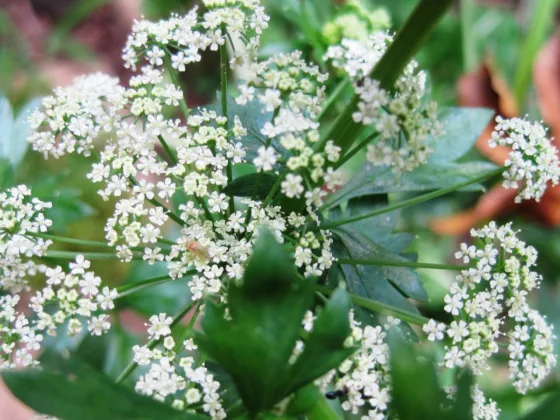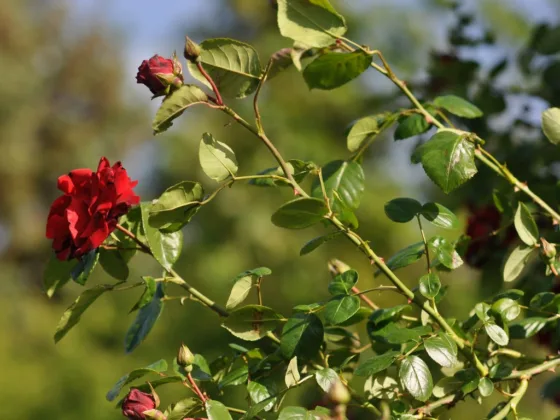Table of Contents Show
Fellow Northscapers, let me take you on a journey to the Dark Side. Yes, we’re going to boldly charge into that part of the yard that strikes more fear in the hearts of even the most diehard northern homeowners and gardeners than any other; the north side of the house.
I’m going to convince you that there is in fact nothing to fear about creating a functional landscape with fantastic gardens in this wonderful part of your outdoor living space. If the north side of your house isn’t performing on par with the rest of your paradise, fear not; what you have in front of you is truly an undiscovered opportunity.
While fear is certainly an inappropriate response, as I’m about to show you, I have also seen too many novice gardeners and wannabe homeowners approach the north side with blissful ignorance. This is as inappropriate a strategy and possibly even more dangerous.
For you see, wantonly heaping a cacophony of your favorite plants into a north-side garden without regard to their cultural preferences and an appreciation of the challenges that lie therein is a recipe for disaster, not to mention a waste of your valuable time and money.
So set aside your fears of landscaping the north side of your house, put on your thinking cap, and come with me as we explore the wonders and challenges of gardening on the Dark Side of the house!
Understanding the Challenges of the North Side
As with all challenges, the first thing we must do is to fully understand the nature of the beast we are about to tackle. There’s no question, the north side of a house does present its own challenges which must be taken into account when we develop our solution.

The most obvious and without a doubt the most important factor is the predominance of shade on the north side of a building. Unless you live at the equator (and if you live in Northen country, that’s not going to happen anytime soon…), the sun tracks an arc across the sky from east to south to west over the course of a day, in a track that never crosses the zenith into the north side at its peak even at solstice. So for at least a good part of the day, the area on the north side of the house is without direct sunlight.
But the converse is also true, and this is a very important point. I’m going to insist that you understand, the north side of a typical one or two-story house is never fully shaded throughout the year either. We like to lump things into categories and say an area is “shady” or “sunny”, but when it comes to this challenge, we need to look hard at the gray areas in between.
Plants don’t grow by “sun” or “shade”, they have specific requirements for hours of sunlight which can be provided by one or two hours of direct blazing sun or a longer period of indirect or low sunlight. Yes, I’m generalizing here, but you need to appreciate that with plants it’s not black and white.
You see, in the North, the sun has prolonged periods where it actually does extend north of east at the beginning of the day, and north of west at the end. At these times, it in fact provides significant light to even the most due-north-facing house, although it may be at a much lower intensity than at midday.
Then there’s a second fact to acknowledge; the degree of shade decreases quite rapidly as you move away from the house, dependent on the height of the building and the length of the shadow it casts. Only the thinnest strip immediately adjacent to the foundation could possibly be in total shade. At some point one or possibly two dozen feet away from the building, you have almost full sunlight.
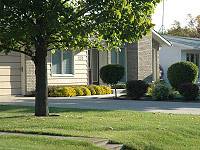
Sure, in winter when the sun is much lower on the southern horizon and doesn’t venture into the northern half of the sky, there may be large tracts of property extending well away from the house which are in significant shade.
But plants only need sun during the active growing season which extends from the last frost of spring to the first frosts of fall or shortly before.
And they only require maximum sunlight during their peak period of growth that typically extends over May through July (depending of course on the variety), which also happens to coincide with the highest trajectory of the sun and the most favorable sunlight pattern on the north side of a building.
Read Also :
- Home Improvements that Save You Money, Save the Planet and Make Your Home Beautiful
- Taking Gardening to the Vertical – Designing With Vines and Climbers
- Understanding Ground Covers, How to Cover Large Spaces With Plants
- Designing a Small Garden Begins with Good Planning
- Small Gardens: Choose Perennials!
That’s why it is critically important to intensively study the nature of the light patterns on the north side of your building more so than anywhere else on your property. You’ll want to squeeze every last ray of light out of every inch here, and that means understanding how it behaves throughout the day and across the seasons.
Also, remember that the house does not stand alone. In mature neighborhoods, large trees will contribute to the shade pattern and can further reduce the total amount of available light. Or, they may be in such a location that they don’t have much of an effect. Either way, you need to take these into account.
Light may be the primary constraint of a northern planting site, but by no means is it the only one you need to consider. The area immediately adjacent to a building tends to be much, much drier than the surroundings, with the building acting as a rain shelter, particularly underneath the eaves. As a result, few plants can grow in this “rain shelter” without supplemental moisture, provided courtesy of us humans.
Then there’s the fact that with the reduced sunlight and exposure to cold northern winds, the north side of a house tends to be much cooler than the other sides. If the area is relatively exposed to wind, it may be as much as a full zone colder than the rest of the yard.
Regardless, the north side is more likely to experience frosts earlier in fall and later in spring, be a degree or two colder than the rest of the yard, and the ground here will thaw a little later and freeze a little earlier. All of these are important factors to consider when selecting plants, a process we’ll get into a little later.
The Rules Still Apply Here
Once you have developed an appreciation for the unique conditions imposed by a north-side location, you must remind yourself that the basic principles of landscape design still apply here. Don’t let the preponderance of shade overwhelm you into forgetting this!
That means that function and interest are your targets, and the attributes of form, color, and texture are the tools at your disposal to achieve these. As always, you have both plants and hard materials to work with, and the techniques of massing, accents, and effective garden design are every bit as important here.
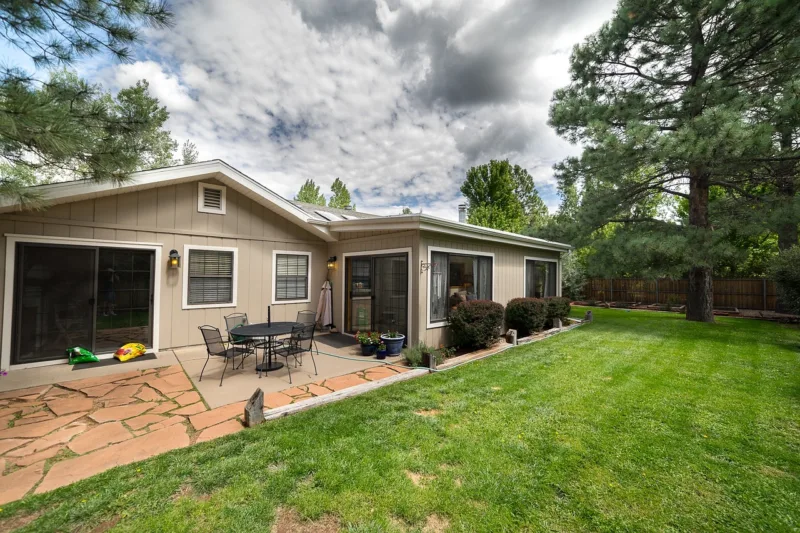
Let the intended function as dictated by the location drive your solution. Is the north side of your house a side yard? If so, you only need minimal management and great freedom of design.
Is it the backyard? If so, consider your personal needs and what you want this space to do for you and your family – entertainment or outdoor barbecues, privacy and solitude, a play area for the kids, or maybe a vegetable or cut-flower garden.
Is this the front view that is exposed to the public? If so, you need to design from the “outside-in” point of view. In this case, foundation gardens are often appropriate, especially creative variants that reveal interesting aspects of your personality to the world.
Here accents are important as well as effects that make a visual impact from a distance. Pay careful attention to the predominant features of the house to which you will want to draw attention; the front door, a picture window, or any other distinctive features that should be highlighted.
Don’t let a north-side location detract you from harmonizing your solution with the rest of the landscape. If you have a specific style or theme, repeat it here. If your landscape uses rigid lines, do so here, and if it utilizes flowing curves, the same would be appropriate.

Of all the landscape attributes available to you, the color will be the hardest to come by in a shady north planting site. But don’t take this to mean that it isn’t possible. It just means that impact and interest from color will likely come less from showy flowers and more from foliage, fruit, stems, and bark.
Shade-loving plants tend to have less showy flowers, smaller flowers, and flowers in more subdued tones of blue, purple, white, and soft pink. But the converse is true for foliage; some of the finest foliage plants are shade-lovers, with all shades of purple, burgundy, gold, and chartreuse at your fingertips.
And where flowers can’t put on a show, let the astounding variety of variegation colors and effects take over, because there are probably more variegated shade-lovers than sun-lovers!
It also means that the other two key attributes of form and texture become even more important in your arsenal. Create interest with an interplay of textures, juxtaposing ferny-cut leaf plants with coarse beauties.
Note interesting forms in plants; rigidly columnar, horizontally tiered, broadly arching, spire-like, or perfectly ball-shaped, to name just a few. Create an undulating and dynamic silhouette by combining these different forms together. That’s what interest is about; motion and variety and a little of the unexpected!
Hardy Shade-Loving Plants
At the end of the day, it inevitably comes down to plants, so let’s have a look at some ideal plants for north-side gardens. For the most part, these will be shade-loving plants, although keep in mind that except for the areas immediately adjacent to the foundation, you’re more likely dealing with some degree of partial shade. Use this fact to broaden your palette of available plants.
There are very few trees that do well in full shade, but that’s not a problem in the least, because you weren’t going to plant a tree right up against the foundation anyway, now were you? As for shrubs, there are actually a few choices that are quite artistic.
For evergreens, yews will tolerate lots of shade, arborvitae (cedars) considerably less, and junipers must have at least some direct sunlight each day. There are a number of exemplary deciduous shrubs like hydrangeas and rhododendrons that will tolerate deep shade.
However, it’s the shrubs that can handle partial shade that really open up the world of plants for you. Use these as backdrops against which other elements of interest will strut their stuff, or for their wonderful textures and distinctive forms.
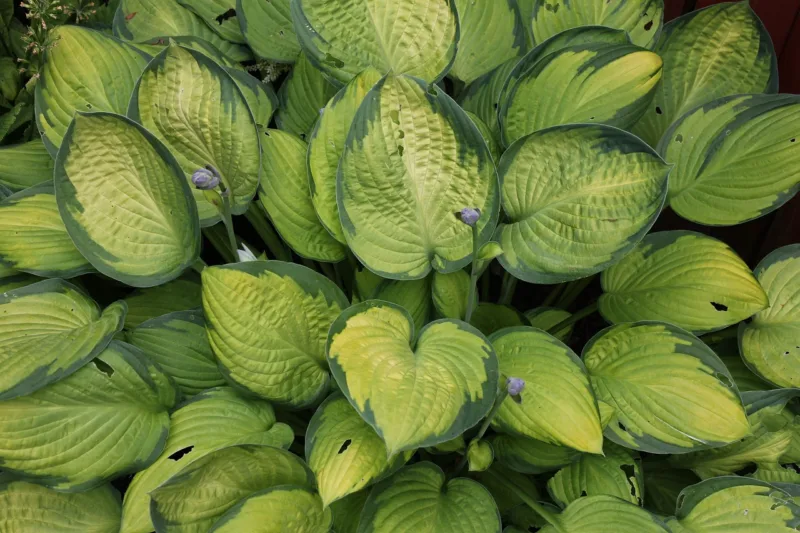
But it’s in the realm of perennials where you’ll find the best shade performers. Here you have at your fingertips the stunning variegated and solid colors of the hostas (Hosta spp.), the uniquely spotted leaves of lungwort (Pulmonaria spp.), the towering gold spires of mayflower (Ligularia spp.), and the wonderfully showy flowers of false spirea (Astilbe spp.).
And with all the new varieties of coralbells (Heuchera spp.) overtaking the market, you’ve got flowers, foliage color and form all in one package! There are short shade-loving wildflowers like Virginia bluebells (Mertensia spp.), delicate ones like foamflower (Tiarella spp.), and dainty ones like bleeding heart (Dicentra spp.).
Some of the finest perennial groundcovers are at their best in the shade. The super-groundcover dead nettle (Lamium spp.) adds a dash of spice with both variegated foliage and colorful flowers, while periwinkle (Vinca spp.) just got a lot more exciting with the new variety ‘Illumination’. Japanese spurge (Pachysandra terminalis cv.) is one of the most durable of all groundcovers. And of course, there are all the ferns, which simply thrive in shade.
Surprisingly many of the sun-loving plants we generally use in our landscapes are adapted to some degree of shade. Oftentimes, they will do just fine with only half a day of sunlight. Some may exhibit reduced flowering or become a little thin but will be no worse for wear.
However, this is not meant to be a generalization; a large number of our landscape trees, shrubs, and perennials need full sunlight, and will not perform acceptably in even partial shade. The best thing to do is know which will and which won’t and let your head dictate what makes it into your plan as opposed to your heart.
And when all else fails and you absolutely must have a certain sun-loving plant for a shady north-side garden, look for substitutions based on the specific attributes that are attracting you to this plant. Try to identify shade-lovers with similar leaf shapes or flower colors or flower forms or branching habits and use them instead, even if they aren’t nearly what you are craving.
A happy plant that only half resembles the characteristics you were seeking is a long shot better than a dead one that meets them completely. Frankly, you’ll be surprised with what you can get away with, and you might even find some new loves in your garden life!
Design Tips And Tricks
Finally, as with any skill, the real power of landscape design for the north side of houses lies in the tricks that the masters use. So without trying to put any of the professional landscapers out of business, allow me to reveal a few of their finer techniques that you might want to apply for your own version of “paradise on the dark side”.
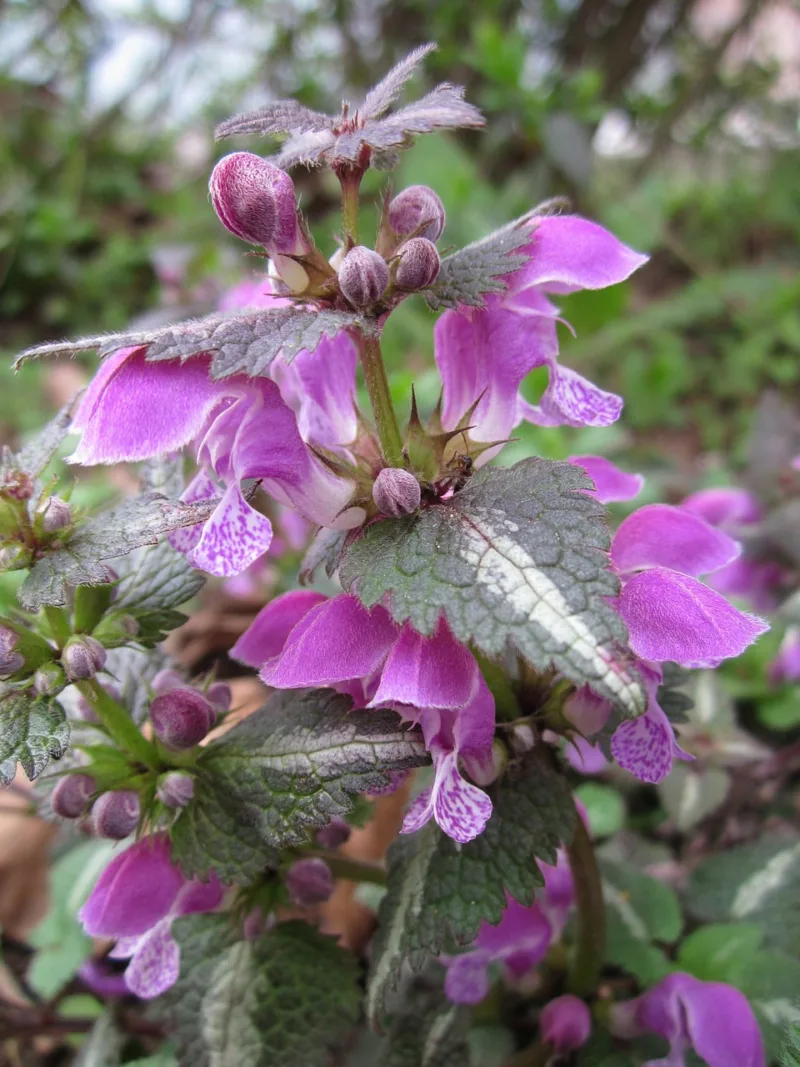
The key is to always find the silver lining in the cloud and to realize when you can pull some “sleights of hand” that would only be noticed if you knew to look for them. First of all, there are actually advantages to the north side. It is cooler and well-protected from the hot sun of our summer afternoons here in the North. Plants such as hostas and other foliage beauties that can burn in direct sunlight will absolutely excel on the north side of a house, and colors such as gold and chartreuse glow far more brightly in the shade than in sunlight.
Use creative planting strategies to take advantage of the fact that the amount of available sunlight increases dramatically as you move away from the building. One trick that’s often used is to plant larger wide-spreading shrubs as the background, but a few feet away from the house as opposed to right next to the foundation.
While their roots are safely away from the rain shadow of the house, their foliage fills in right against the building and extends out even further into the north side. By the time you’re facing down with lower shrubs and perennials, you have at least partial shade to work with, and a resultant broader palette of plants at your disposal.
We’ve talked a great deal about plants, but the north side of a house is a great place to mix in some hardscaping materials like stones, decorative rock, and colorful mulches. Besides bringing colors into shady locations that are unavailable from plants, they also permit you to “cross the boundaries” between the different light levels you get as you move away from the house.
Since plants really can’t perform this trick, these swaths of hard materials which run counter to the light patterns will balance out the linearity of the plantings and can belie the fact that you’ve actually sited these plants according to their light preferences. And don’t be afraid to introduce a single hardscaping focal point like a statue or fountain; shade never hurt one of these before!
And this leads me to one of my favorite tricks of the pros and probably one of the most difficult to notice – extension gardens. Here’s the technique. As a north-side garden winds along the side of the house towards either the east or west extreme of the building, it flares outwards in a movement that extends it at a 45º angle away from the corner of the building.
Not only does this serve to counter the hard edge of the building with a flowing curve, but it also projects a significant part of the garden into almost full sunlight. Here, you can plant almost any sun-lover and expect nothing less than optimal performance. The rest of the garden may be planted with shade lovers, but as we tend to view composition as a whole, we are easily fooled into thinking that this isn’t a shade garden at all!
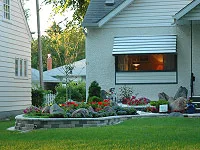
Want to get even more crafty? Here’s a trick from the books of home stagers. Keep a few planted containers handy in the sunnier parts of your yard, a few more than necessary. Then, when entertaining (or even just on weekends, if you’re really that vain!), move them into a shady north-side location to complement the composition. Your guests and passersby will be blissfully ignorant and think you’re some kind of master gardener to get them to grow there!
There are countless other techniques worth considering. For public view areas, move larger accent features further away from the house and into the sunlight, and support them with shade-loving background plants against the house.
Use greater masses of less breathtaking perennials where maybe one or two solitary bold accents would have sufficed in a sunny garden. Be counterintuitive and add even more shade to a north site to create the ultimate personal retreat from city life. And the list goes on…
Are you less afraid now to go out and tackle that landscaping project on the north side of your house now? Great! See, I told you your fears were unwarranted!

